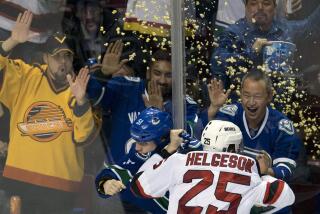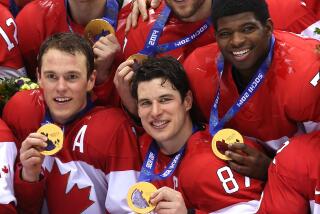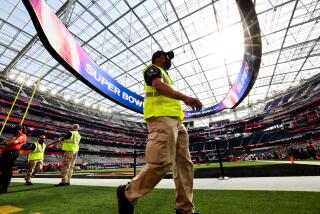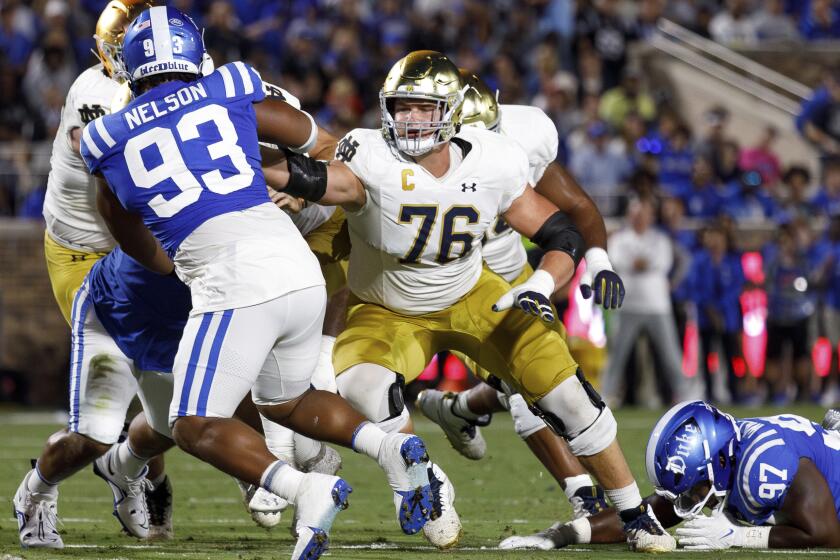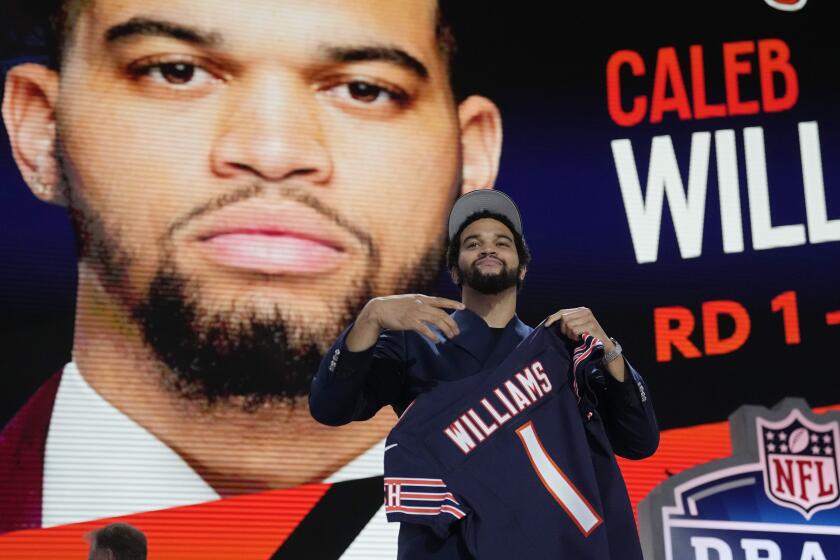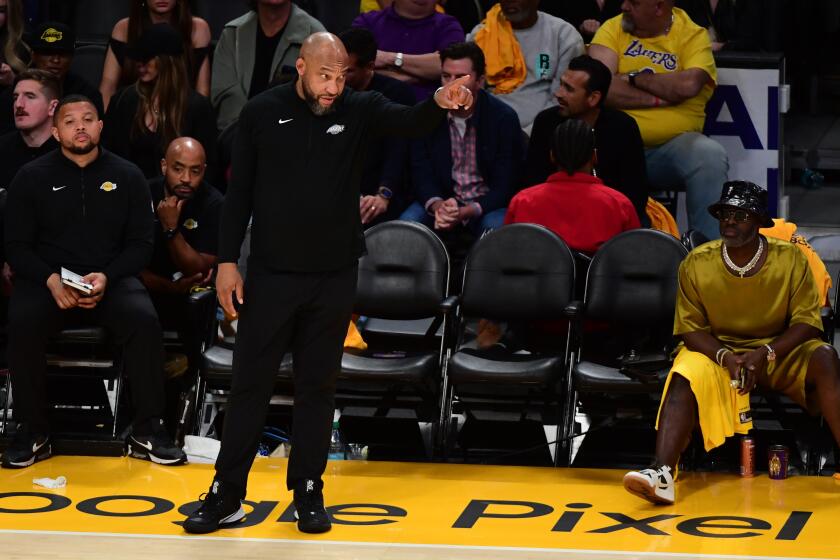Backlash is startling after NHL is sued over repetitive brain injuries
Ask any former NHL player who’s about 45 or older if he ever had a concussion and he’s likely to say he got his bell rung once or twice but went back out and played. It was unthinkable not to. Stoicism was — and is — as much a part of the game as ice.
Medical knowledge about the terrible effects of repeated brain injuries has since advanced. It’s flippant to joke about brain injuries after learning of the neurological and behavioral problems experienced by Bob Probert and Derek Boogaard and other NFL players who were posthumously found to have chronic traumatic encephalopathy, or degenerative brain disease.
The NFL in August agreed to pay $765 million to 4,500 former players to settle a lawsuit alleging pro football concealed information on the dangers of concussions. NFL executives denied wrongdoing but the agreement spared them from disclosing what they knew and when they knew it and lessened the public relations hit the league faced.
All of which makes it startling that there has been a stinging backlash since 10 former NHL players filed a class-action lawsuit last week in federal court in Washington claiming the NHL didn’t inform players about the perils of repetitive brain injuries.
Former Toronto Maple Leafs captain Rick Vaive, the best-known in the group, asked to remove his name from the suit. His lawyer, Trevor Whiffen, said in a statement Vaive “misunderstood the nature of the proceeding” and has no interest in suing the NHL.
Bombastic Canadian TV commentator and former Bruins Coach Don Cherry said he felt sorry for some players “that maybe got whacked a little” but declared the suit “a money grab.” Retired star forward Jeremy Roenick was scornful. “They can go after the league that they craved to be in since they were little kids and paid their salary,” Roenick told the Associated Press, adding he knew the risks involved but played “because I loved the game.”
Reportedly, 200 former NHL players have joined the suit but their names have not been made public. There has been no support voiced by prominent players whose careers were ended by concussions, such as Pat LaFontaine, Keith Primeau, Paul Kariya or Eric Lindros.
Is stoicism holding them back, or skepticism over the suit’s merits?
In part the suit claims, “The NHL’s active and purposeful concealment of the severe risks of brain injuries exposed players to unnecessary dangers they could have avoided had the NHL provided them with truthful and accurate information and taken appropriate action to prevent needless harm.” That could be difficult to prove.
The NHL, while acceding to players’ wishes to keep fighting in the game, in 1997 established a concussion study group and the league has increased the severity of penalties for blows to the head and established a concussion treatment protocol. It made helmets mandatory for players who signed pro contracts after June 1, 1979, and made visors mandatory for players who enter the NHL starting with this season.
Former Rams linebacker Mel Owens is an attorney and partner at Namanny, Byrne and Owens of Laguna Hills, one of two firms behind the lawsuit. He said the case against the NHL wouldn’t be weakened because some of the plaintiffs didn’t wear helmets or other gear that might have shielded them from brain injuries.
“That’s not the issue. The issue is after they had the injury, what did they do? What did they know when they had the injury?” he said. “Whatever happened on the ice or field were sanctioned. The NHL, the NFL, in both cases the rules are promulgated by the league.”
Owens also said the suit against the NHL has “some parallels” to the suit against the NFL, which started with few plaintiffs.
“As players find out, there are guys out there like them who say, ‘I didn’t know that there was someone helping players out,’ or that there’s someone with the ability to help these guys, and then they seek help,” he said.
The suit also contends research on brain injuries has gone on since the 1920s but was ignored by the NHL. “If it’s out there, you have the duty to inform,” Owens said. “There are a lot of issues that are raised. A lot of elements to it, a lot of moving parts. This is the beginning stages and we’ll see what happens.”
Slap shots
Evgeni Malkin’s 21 assists for the Pittsburgh Penguins in 15 November games were the most in a calendar month since Wayne Gretzky’s 21 for the Kings in January, 1996.
Daniel Alfredsson, who left Ottawa for Detroit after 17 seasons, was honored with a video tribute and standing ovation when he returned Sunday. He scored the empty-net goal that clinched the Red Wings’ 4-2 victory.
Congratulations to U.S. Hockey Hall of Fame inductees Cindy Curley, Bill Guerin, Peter Karmanos Jr., Ron Mason and Doug Weight. And to Lester Patrick trophy winner Kevin Allen of USA Today for contributions to hockey in the U.S.
Colorado Avalanche goaltender Semyon Varlamov appeared in a Denver court Monday but remains free on bond while facing a misdemeanor assault charge involving his girlfriend. According to the Denver Post, he is expected to enter a plea Jan. 22.
Twitter: @helenenothelen
More to Read
Get our high school sports newsletter
Prep Rally is devoted to the SoCal high school sports experience, bringing you scores, stories and a behind-the-scenes look at what makes prep sports so popular.
You may occasionally receive promotional content from the Los Angeles Times.
